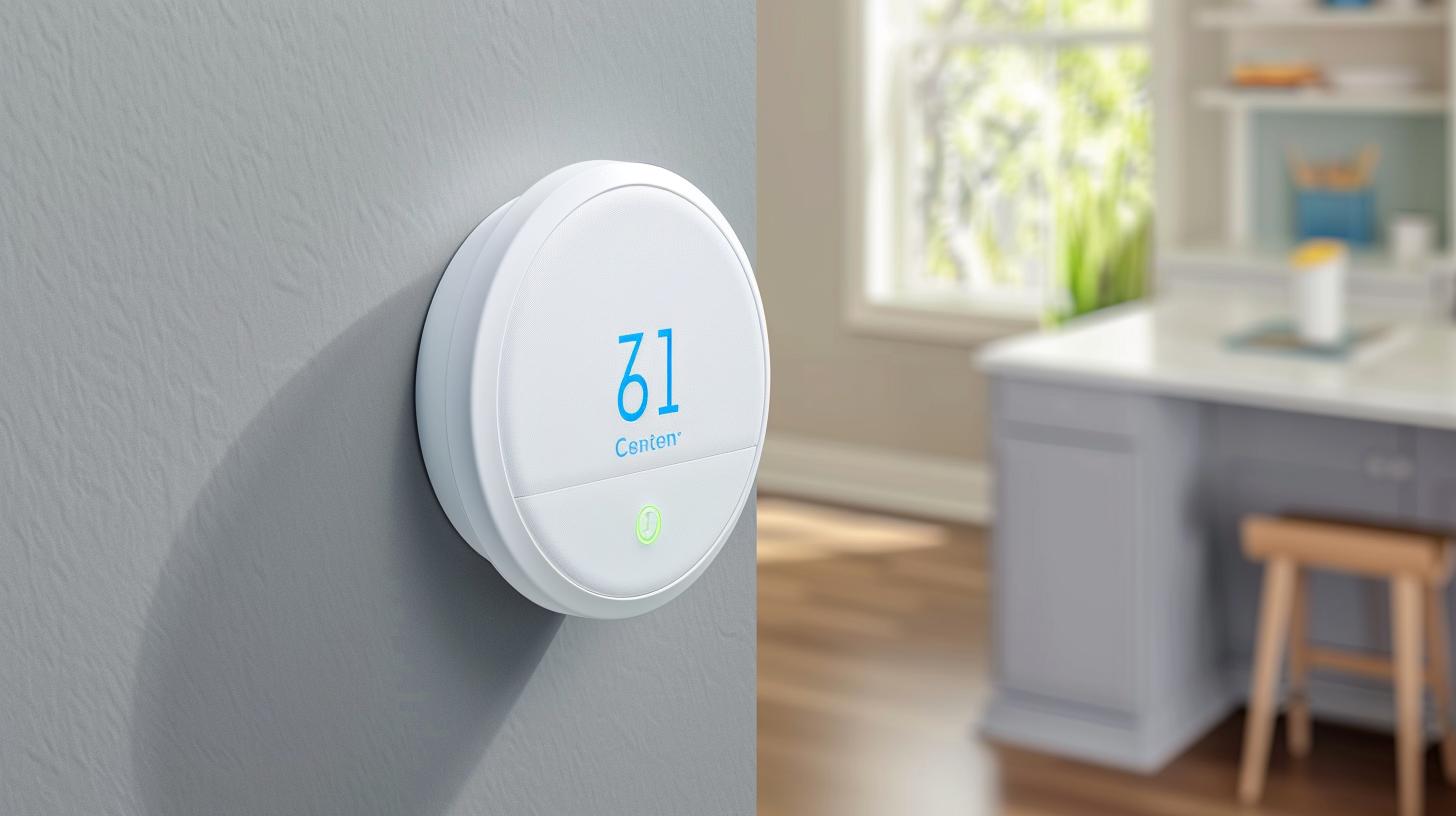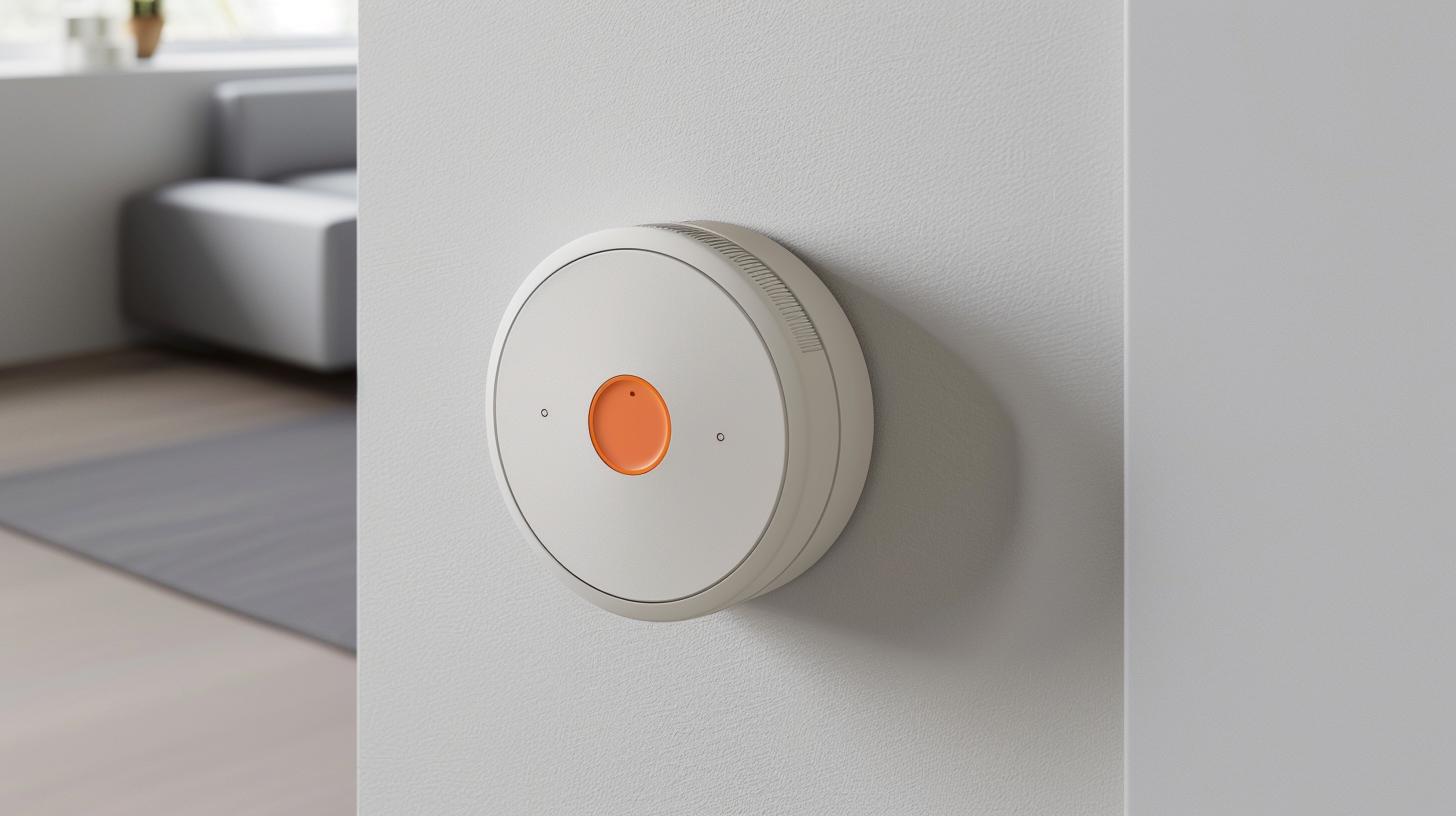
Are you considering installing a Sensi Thermostat in your home? One common question that arises is “does sensi thermostat need c wire?” The Sensi Thermostat is a popular choice for homeowners looking to upgrade their HVAC system to a smart, programmable thermostat. This article will provide an overview of the Sensi Thermostat, the basic understanding of C wire in thermostats, the importance of C wire in HVAC systems, and common issues with Sensi Thermostat installation.
The Sensi Thermostat is known for its user-friendly interface and energy-saving features. It allows users to control their home’s temperature remotely through a smartphone app and offers programming options for personalized comfort and energy efficiency. However, to ensure proper functioning, it is essential to understand the role of the C wire in thermostat installation.
The C wire, or “common wire,” provides continuous power to the thermostat, enabling it to maintain settings and power features such as Wi-Fi connectivity. While not all HVAC systems require a C wire for basic thermostat operation, it is crucial for powering smart thermostats like the Sensi model. Without a C wire, users may experience issues such as intermittent Wi-Fi connectivity, rapid battery drain, or limited functionality of the thermostat.
For those considering installing a Sensi Thermostat without an existing C wire, it is important to explore alternatives. Options include using a power extender kit (PEK) provided by Emerson – the manufacturer of Sensi Thermostats – or hiring a professional electrician to install a new C wire. Each alternative has its pros and cons in terms of cost and simplicity.
Stay tuned as we delve into the pros and cons of using a C wire with the Sensi Thermostat, followed by a step-by-step guide on how to install a new C wire for this popular smart thermostat. If you’re experiencing issues with your Sensi Thermostat installation due to lack of a C wire, we’ll also provide troubleshooting tips to help you get your system up and running smoothly.
Basic Understanding of C Wire in Thermostats
The C wire, also known as the common wire, is an essential component of thermostat installation, especially for smart or Wi-Fi-enabled thermostats like the Sensi Thermostat. Let’s delve into the basic understanding of what the C wire is and why it’s crucial for your HVAC system.
The C wire serves as the “common” side of the 24VAC transformer in a heating/cooling system. It provides continuous power to the thermostat, ensuring stable and consistent functionality. In traditional thermostats, batteries are used as a power source, but with smart thermostats like Sensi, constant power from the C wire is required to support features such as Wi-Fi connectivity and advanced programming.
Here are some key points to understand about the C wire:
- Provides constant power supply
- Enables smart thermostat features
- Eliminates reliance on battery power
- Enhances overall system performance
An HVAC system without a C wire might experience intermittent issues such as frequent disconnection from Wi-Fi, inaccurate temperature readings, or inconsistent operation. Without a reliable power source, the Sensi Thermostat may not function optimally, affecting both user experience and energy efficiency.
It’s important to note that while most conventional HVAC systems already have a C wire installed, older systems or those with fewer wires may not. In such cases, additional steps must be taken to ensure proper installation and functionality when using a Sensi Thermostat.
In summary, understanding the role of the C wire in thermostats helps users appreciate its significance in maintaining reliable and efficient operation of smart devices like the Sensi Thermostat. The next section will explore whether this particular thermostat requires a C wire for proper functioning and potential alternatives for installation.
Importance of C Wire in HVAC Systems
What Is the C Wire?
The C wire, also known as the common wire, is an essential component of HVAC systems that provides continuous power to the thermostat. It acts as a constant source of power for the thermostat and is crucial for functions such as maintaining Wi-Fi connectivity, powering the display, and enabling programmable features.
Role of C Wire in HVAC Systems
In HVAC systems, the C wire completes the circuit that delivers continuous power to the thermostat. Without a C wire, the thermostat may experience power issues, such as frequent disconnection from Wi-Fi networks or failure to hold temperature settings. This can result in inefficiencies in heating and cooling operations and may lead to discomfort for occupants in the building.
Compatibility With Sensi Thermostat
When it comes to the Sensi Thermostat, having a C wire is highly recommended to ensure proper functioning. The inclusion of a C wire allows the Sensi Thermostat to work seamlessly with HVAC systems, providing stable power supply and ensuring reliable performance. While some older HVAC systems may not have a C wire, it is still possible to install one for compatibility with the Sensi Thermostat.
Enhanced Performance and Energy Efficiency
By having a C wire connected to the Sensi Thermostat, users can experience enhanced performance and energy efficiency. With a constant source of power, the thermostat can maintain consistent communication with the HVAC system, resulting in precise temperature control and optimized energy usage. This not only improves comfort but also leads to potential energy savings over time.
Common Issues With Sensi Thermostat Installation
Installing a new thermostat can be a challenge, especially if you are not familiar with the wiring and technical requirements. When it comes to the Sensi Thermostat, there are some common issues that users may encounter during installation. These issues can range from compatibility problems to wiring complications, but with the right knowledge and troubleshooting tips, they can be easily resolved.
One of the most common issues with Sensi Thermostat installation is the lack of a C wire. The C wire, also known as the common wire, is an essential component for many smart thermostats, including the Sensi Thermostat. Without a C wire, the thermostat may not function properly or at all. This leads many users to wonder, “does Sensi thermostat need C wire?”.
Another issue that users may face during installation is compatibility with their HVAC system. The Sensi Thermostat is designed to work with most heating and cooling systems, but there are certain systems that may not be compatible. This can result in frustration and confusion for users who were hoping to upgrade their existing thermostat to a smart one.
Furthermore, some users may encounter difficulties with the wiring process itself. Connecting the wires from the HVAC system to the Sensi Thermostat requires careful attention to detail and knowledge of HVAC wiring standards. Any mistakes or misconnections can lead to malfunctioning of the thermostat.
In addition, understanding whether or not a C wire is needed for proper functioning of the Sensi Thermostat can be confusing for many users. This lack of clarity can make it difficult for individuals to determine if their existing wiring setup will support the installation of a smart thermostat like the Sensi.
To address these common issues with Sensi Thermostat installation, it is important for users to thoroughly research and understand the requirements and recommendations provided by Emerson, the manufacturer of Sensi Thermostat. By educating themselves on these key factors, users can ensure a smoother installation process and avoid potential setbacks down the line.
By addressing these common issues with Sensi Thermostat installation head-on, users can improve their understanding of what is required for successful setup and operation of this smart thermostat in their homes.

Does Sensi Thermostat Require C Wire for Proper Functioning?
Sensi Thermostat, a popular smart thermostat among homeowners, is known for its easy installation and user-friendly interface. However, many users have questions about whether or not it requires a C wire for proper functioning. In this section, we will delve into the details of Sensi Thermostat and its compatibility with the C wire.
Understanding the C Wire
Before we discuss whether Sensi Thermostat requires a C wire, let’s first understand what a C wire is. The C wire, also known as the common wire, is an essential component in thermostat installation. It provides constant power to the thermostat, ensuring uninterrupted operation and consistent performance.
Importance of C Wire in HVAC Systems
The C wire plays a crucial role in HVAC systems, as it provides the necessary power for smart thermostats to function efficiently. Without a C wire, some thermostats may experience intermittent power issues or may not function at all. It also allows for continuous communication between the thermostat and the heating/cooling system.
Does Sensi Thermostat Require C Wire?
Yes, Sensi Thermostat does require a C wire for proper functioning. While some older thermostats may work without a C wire by using batteries or alternative power sources, smart thermostats like Sensi typically need a constant power supply to operate all of its features effectively.
Alternatives to C Wire for Sensi Thermostat
If your home does not have a C wire, there are alternatives to consider when installing a Sensi Thermostat. One option is to use an external 24V transformer that can provide constant power to the thermostat. Another alternative is using an add-a-wire accessory that can repurpose existing wires within the HVAC system to act as a virtual C wire.
Pros and Cons of Using C Wire With Sensi Thermostat
Using a C wire with Sensi Thermostat offers more reliability and stability in terms of powering the device compared to alternative methods. However, installing a new wire can be challenging for some users and may require professional assistance.
By understanding the importance of the C wire in HVAC systems and its necessity for proper functioning of smart thermostats like Sensi Thermostat, homeowners can make informed decisions when it comes to installation and compatibility requirements.
Alternatives to C Wire for Sensi Thermostat
When it comes to installing a Sensi thermostat, the presence of a C-wire in your HVAC system is often a deciding factor. However, not all homes have a C-wire readily available for installation, which may lead homeowners to explore alternative options.
If your home does not have a C-wire, there are several alternatives that can be considered to power your Sensi thermostat effectively. Here are some alternative options to consider:
1. Power Extender Kit: One popular alternative to the C-wire is using a power extender kit. This kit allows you to connect the G (fan), W (heat), and Y (cool) wires from your HVAC system directly to the Sensi thermostat, bypassing the need for a C-wire.
2. Re-purposing Unused Wires: In some cases, older HVAC systems may have unused wires that can be repurposed for providing power to your Sensi thermostat. For example, if there is an unused wire previously used for an older thermostat feature, such as an outdoor temperature sensor, it can be repurposed as a C-wire.
3. Battery-Powered Option: If none of the above options are feasible in your home, you may opt for using battery-powered thermostats instead of ones that require a C-wire. While these thermostats may not offer all the same features as those powered by a C-wire, they still provide basic functionality.
It’s important to note that while these alternatives can work well for powering your Sensi thermostat without a C-wire, they may have limitations in terms of certain advanced features or compatibility with specific HVAC systems.

Before proceeding with any alternative method, it is essential to consult with an HVAC professional or refer to the manufacturer’s guidelines to ensure that your chosen approach is suitable for your specific setup.
Ultimately, while having a C-wire provides an ideal power source for the Sensi thermostat and enables full functionality, exploring alternative options can offer viable solutions for homes where installing a C-wire may be challenging or not feasible.
Pros and Cons of Using C Wire With Sensi Thermostat
The use of a C wire with the Sensi thermostat comes with its own set of advantages and disadvantages. It is important to weigh these factors before deciding whether or not to install a C wire with the Sensi thermostat.
One of the primary benefits of using a C wire with the Sensi thermostat is that it provides constant power to the thermostat, ensuring stable and reliable operation. This can prevent issues such as the thermostat losing power or resetting due to intermittent power supply, especially during HVAC system operations.
Additionally, using a C wire can enable the Sensi thermostat to support more advanced features such as Wi-Fi connectivity and smart home integrations. With constant power from the C wire, the thermostat can maintain an active connection to Wi-Fi networks for remote control and monitoring, as well as receive software updates and notifications seamlessly.
On the other hand, one downside of using a C wire with the Sensi thermostat is that it may require additional wiring work during installation. Not all HVAC systems are equipped with a C wire by default, which means that homeowners may need to hire professional help or invest time in running new wiring to support the C wire configuration.
Another consideration is that some older HVAC systems may not be compatible with C wires or may require additional modifications for proper integration. This could mean extra costs and efforts for homeowners looking to use a C wire with their Sensi thermostat.
Furthermore, some users have reported compatibility issues when using a C wire with certain HVAC systems and the Sensi thermostat. These issues could result in malfunctions or operational limitations, potentially requiring troubleshooting or alternative solutions.
It is important for homeowners to carefully evaluate their specific HVAC setup and needs before deciding whether using a C wire with the Sensi thermostat is beneficial for them. Understanding both the advantages and drawbacks can help make an informed decision about integrating a C wire into their heating and cooling system for optimal performance of the Sensi thermostat.
Step-by-Step Guide to Installing C Wire for Sensi Thermostat
If you are considering installing a Sensi thermostat in your HVAC system, you may be wondering if it requires a C wire for proper functioning. In this section, we will provide you with a step-by-step guide to installing a C wire for your Sensi thermostat.
Step 1: Gather the Necessary Tools
Before you start the installation process, make sure you have all the necessary tools and materials on hand. You will need a screwdriver, wire cutters, wire nuts, and electrical tape. It’s also a good idea to have the installation manual for your Sensi thermostat handy.
Step 2: Turn Off Power
As with any electrical installation, it’s important to turn off the power to your HVAC system before beginning. This can usually be done by flipping the breaker switch in your electrical panel that controls the HVAC system.
Step 3: Locate Your HVAC System
Once the power is off, locate your HVAC system and remove the cover to access the wiring. Look for the existing wires connected to the thermostat terminals – these are usually labeled R, G, Y, and W. The C wire may already be present in your system, but if not, you will need to install one.
Step 4: Install the C Wire
If your system does not already have a C wire, you will need to run a new wire from the HVAC control board to your thermostat location. Connect one end of the new wire to the C terminal on the control board and thread it through the wall to where your thermostat is located. Connect the other end of the wire to the C terminal on your Sensi thermostat.
Step 5: Test Your Installation
After connecting the C wire, turn on the power to your HVAC system and test your new wiring configuration. Ensure that all connections are secure and that there are no exposed wires. If everything looks good, replace any covers that were removed during installation.
By following these step-by-step instructions, you can successfully install a C wire for your Sensi thermostat and ensure that it functions properly within your HVAC system.
Troubleshooting Tips for C Wire Installation With Sensi Thermostat
In conclusion, the Sensi thermostat is a popular choice for homeowners looking to upgrade their HVAC system to a smart and energy-efficient model. However, one of the common questions that arise when considering installing a Sensi thermostat is whether it needs a C wire for proper functioning.
As discussed earlier in this article, the C wire, also known as the common wire, is an essential component in most HVAC systems. It provides constant power to the thermostat, ensuring its continuous operation and enabling features such as Wi-Fi connectivity and efficient control of heating and cooling systems.
While some users may be able to install a Sensi thermostat without a C wire using alternative methods such as using an external transformer or utilizing power-stealing options, these solutions come with their own set of limitations and potential issues. Therefore, it is generally recommended to have a C wire installed for optimal performance.
For those who are considering installing a C wire for their Sensi thermostat, it’s important to weigh the pros and cons. On one hand, having a C wire ensures stable power supply and reliable operation. On the other hand, the installation process may require professional help or technical know-how.
If you do decide to move forward with installing a C wire for your Sensi thermostat, it’s crucial to follow a step-by-step guide to ensure proper installation. Additionally, troubleshooting tips can come in handy if you encounter any issues during or after installation.






